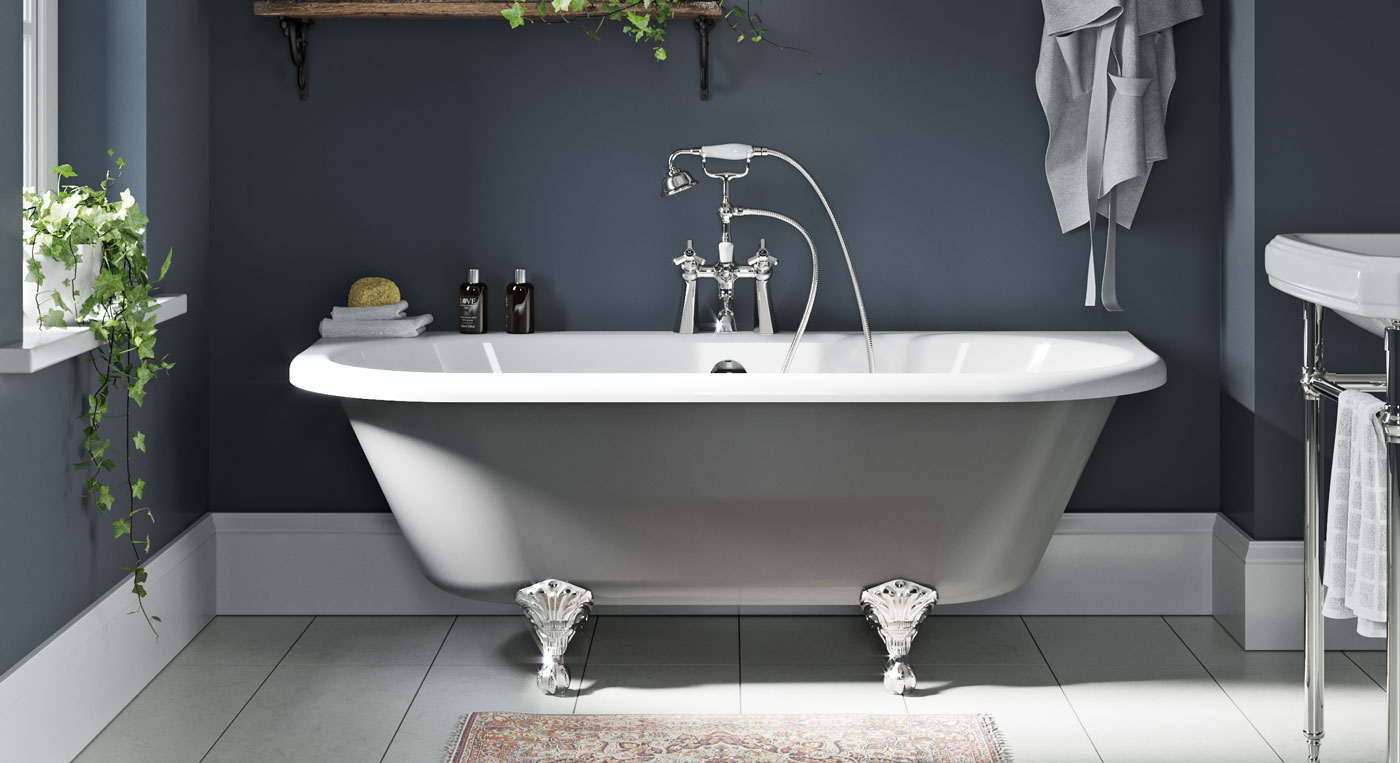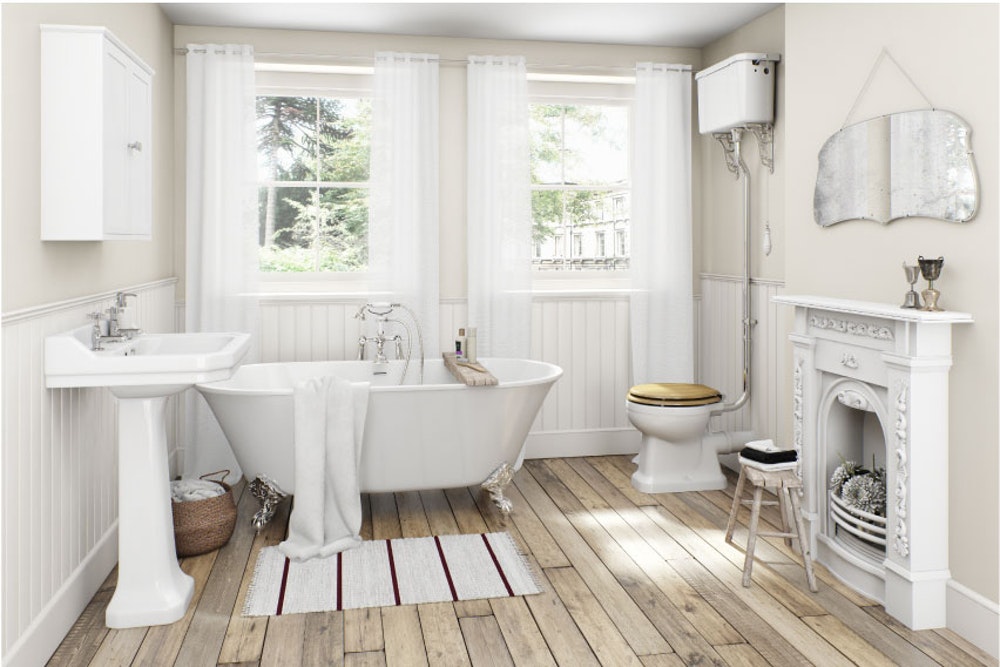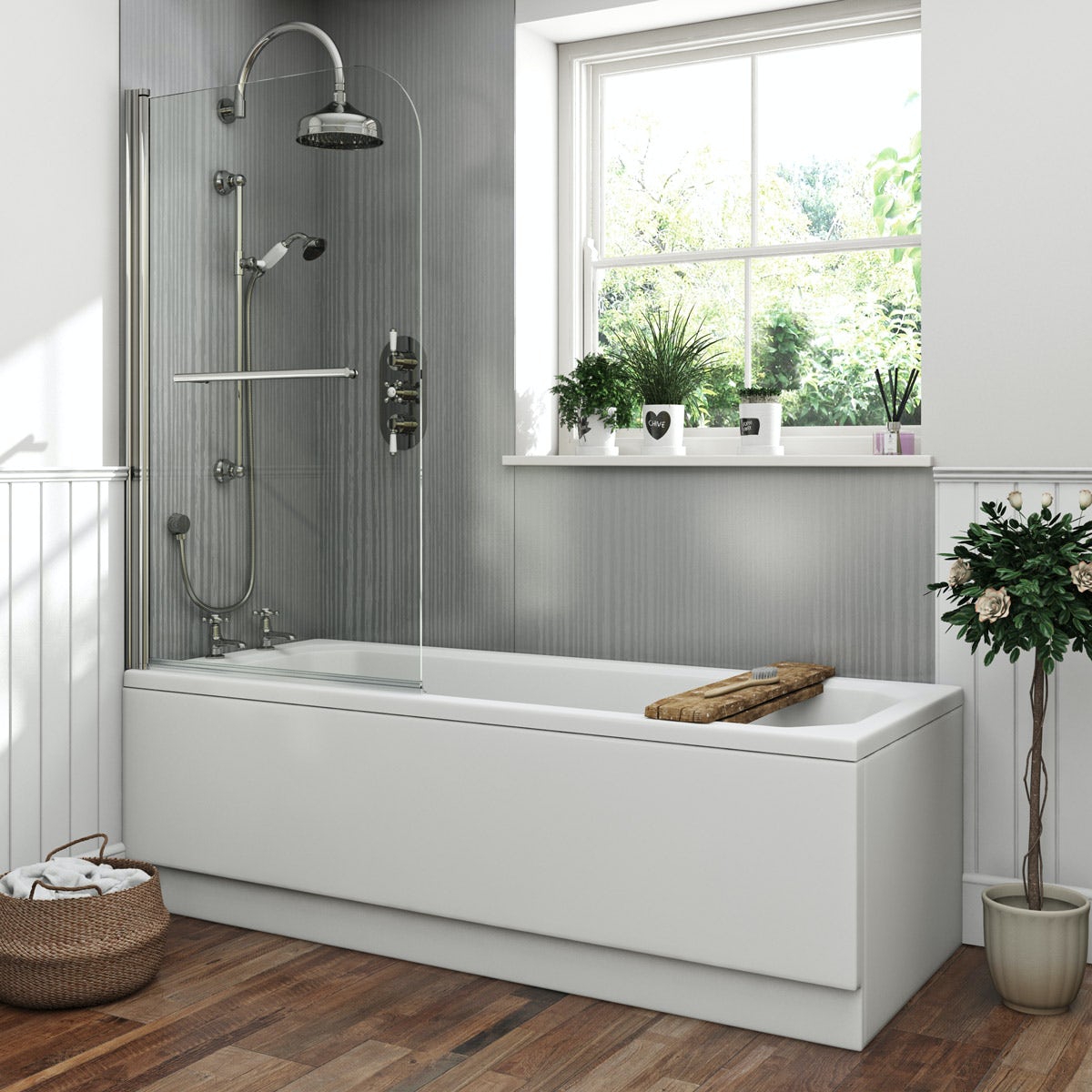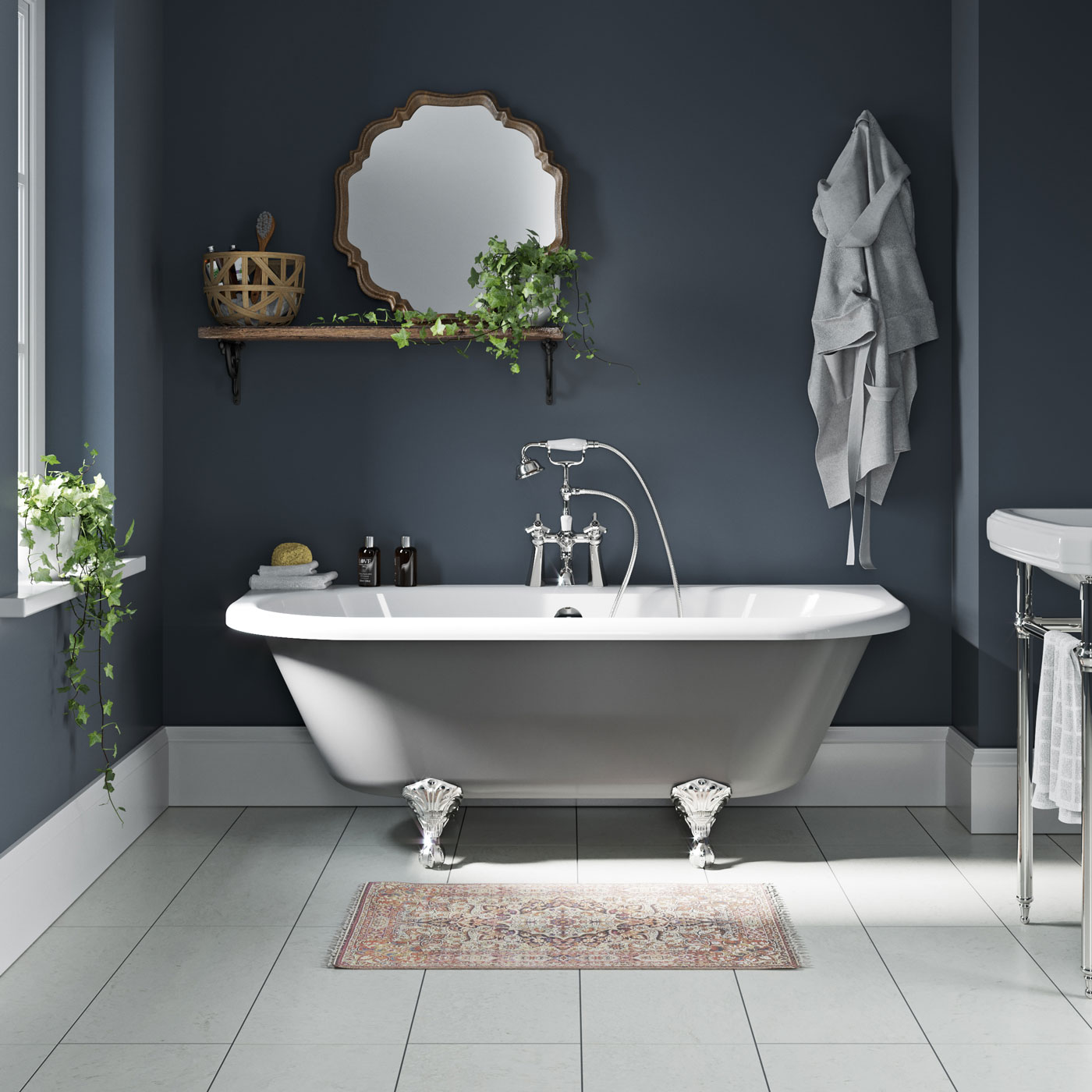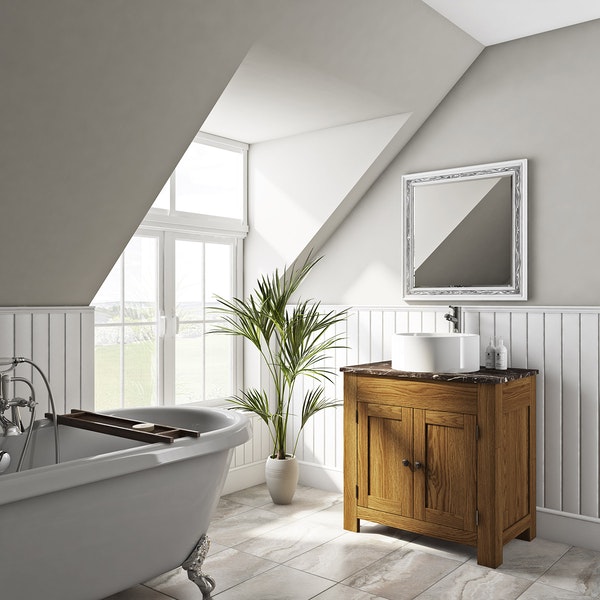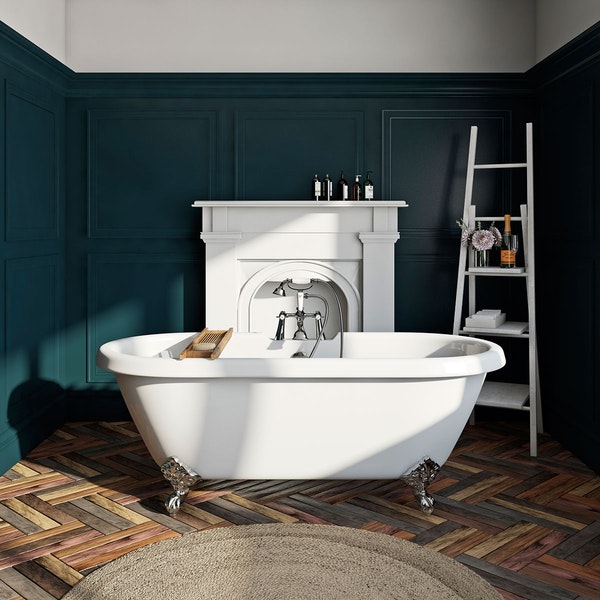When remodeling your bathroom, one of the most important decisions you’ll have to make is choosing the right material for your bathtub. But with so many options available, it can be a daunting task figuring out which material is best for your needs.
In this blog post, we will review Bathtub Materials 101: Pros and Cons of the Most Common Types. We will cover the benefits and drawbacks of the most popular materials such as acrylic, enameled steel, and porcelain. We’ll also provide an overview of some of the lesser known materials like cast iron and stone. After reading through this post, you should have a good understanding of the different bathtub materials and be able to make an informed decision that best suits your lifestyle. So, let’s dive in and take a look at the pros and cons of the most common bathtub materials!
Quick Overview of Key Points
Common bathtub materials include acrylic, cast iron, and fiberglass. Each material has its own unique benefits and drawbacks such as durability, maintenance, cost, and more that should be considered when selecting a bathtub material.
Pros and Cons of Porcelain
Porcelain is a popular bathtub material option and for good reason. Porcelain has a sleek, smooth texture that can easily be wiped clean and retain its shine for many years. It is non-porous, making it resistant to mold and mildew growth which makes it a sanitary choice for bathrooms. Additionally, porcelain resists fading, discoloration, and staining better than other materials; so you don’t have to worry about changing colors over time. The mirror finish of porcelain reflects light and can open small bathrooms up to make them seem larger.
When considering cost, porcelain is generally an average expense due to its moderate price tag compared to other bathtub materials. Porcelain is also incredibly durable and capable of standing up against extreme temperatures without being damaged, making it a great choice for busy households with children or pets.
On the downside, porcelain is especially heavy since it’s made with steel rods reinforcing it beneath the surface. This makes installation difficult as it requires several people to lower the tub into place. Additionally, because of its slippery surface, a non-slip bottom insert must be used in order to prevent falls or other accidents. Without proper installation that takes into consideration its weight and slippery nature, porcelain may not be the most suitable choice for the bathtub material.
In order to best maintain your porcelain bathtub’s luster and durability over time, regular cleaning with mild detergent and a soft cloth are recommended at least once a week. Although this maintenance isn’t too strenuous when done on occasions, it should factor into your decision making when choosing between bathtub materials.
Overall, porcelain is a polished and luxurious material that is ideal for long-term use if given proper maintenance. For those looking to upgrade their bathroom with a modern feel or want something invitingly luxurious that will last longer over time, porcelain is worth considering despite its estimated cost and maintenance task requirements.
The next section delves into the pros and cons of installation and maintenance of each common bathtub material: from natural stone like marble and granite to synthetic composites such as acrylic.
Highlights
Porcelain is a popular material for bathtubs due to its sleek texture, non-porous surface, and resistance to fading, discoloration and staining. Although it is an average cost compared to other materials, it is incredibly durable and capable of standing up to extreme temperatures. Installation can be difficult due to its weight and slippery surface, so a non-slip insert is necessary for safety. Regular cleaning with mild detergent and a soft cloth is recommended to help maintain its luster and durability. Porcelain is ideal for long-term use if the proper maintenance is done.
Installation and Maintenance
When considering which type of bathtub is right for you, it’s important to consider the installation process and ongoing maintenance requirements. Installation costs vary significantly based on the material and complexity of the bathtub. In general, acrylic tubs are relatively lightweight and easy to install, while cast iron models require more complicated installation procedures. It’s also important to note that stone, fiberglass, and engineered marble may require professional installation.
Once installed, the ongoing maintenance requirements for a bathtub depend largely upon the material it’s made from. Acrylic and fiberglass will typically just require regular cleaning with warm water and a mild soap solution. Cast iron tubs require more frequent applications of special rust-preventing coatings or paints. It’s also important to remember that these pieces can easily chip or corrode over time if exposed to harsh chemicals like bleach or oil-based soaps. Stone and engineered marble sinks tend to retain its shine longer than average with proper care, but they do require additional cleaner solutions to prevent dullness or etching due to mineral deposits.
To ensure long-term durability and aesthetic appeal of your bathtub materials, it is essential to follow the proper instructions for care and maintenance outlined by the manufacturer according to their specific product specifications.
Now let’s take a look at the pros and cons of acrylic when used as a bathtub material.
Pros and Cons of Acrylic
Acrylic is often a popular bathtub choice due to its cost-effectiveness, availability and durability. When compared to more expensive materials such as porcelain or cast iron, acrylic is usually preferred because of its lower price point, making it an excellent option for budget-conscious buyers. Acrylic tubs also come in a variety of shapes and sizes which makes it very easy to customize your bathroom design with an acrylic tub that fits your home’s aesthetic.
Acrylic also has properties that make it incredibly durable — it’s resistant to wear and tear, stains, rust, mold and mildew.It also has excellent insulation qualities, meaning the tub will retain heat longer than other materials, allowing users to enjoy hotter baths for longer periods of time.
However, any type of wear caused by impact or by scraping can cause scratches on the surface of the material which are difficult to repair and could eventually cause issues such as cracking. Additionally, many acrylic bathtubs require non-slip mats or treatment due to their smooth finish which can be slippery when wet. These modifications can add additional costs to your project.
Having considered the pros and cons of acrylic materials, let’s turn our attention to the style, aesthetic and durability possible with other types of materials in the next section.
Style, Aesthetic and Durability
When selecting the perfect bathtub material, its style, aesthetic, and durability should all be considered. With modern advancements in materials, bathtub styles are available in a range of options such as sleek and modern or rustic and antique styles. Bathtubs can also be customized to complement any sized bathroom. Additionally, when considering aesthetic appeal, homeowners should consider the finish of their tubs. Popular finishes include enamel, porcelain, or acrylic-coated steel that require minimal maintenance and provide a beautiful look.
When thinking about durability, many traditional bathtub types made from cast iron or acrylic are known to last for decades while still maintaining their beautiful finishes. Likewise, solid surface tubs constructed from polymer resins with an aluminum honeycomb substrate offer enhanced strength and durability. Conversely, some higher end tubs crafted from natural stone—like marble or granite—advance in design but come with more upkeep and repairs over time.
Now let’s move onto the pros and cons of one popular bathtub material—cast iron.
Pros and Cons of Cast Iron
Cast iron is a classic choice for bathtubs, but it comes with some drawbacks. On the pro side, it is extremely durable and can last upwards of 30 years when cared for properly. It also has a very luxurious feel and look, so it will add a touch of elegance to any bathroom. Providing it is kept clean and out of standing water, cast iron tubs do not rust or corrode easily.
However, there are some negatives to consider as well. Cast iron is heavy, and due to its weight, installation can be expensive and difficult. It also has high thermal retention, so it takes longer for baths and showers to warm up than other materials. Lastly, cast iron does need to be maintained regularly using special cleaning agents in order to keep its shine and avoid any staining or discoloration.
In conclusion, cast iron can be a great option for those looking for a durable, elegant material that will last for many years. However, it may require more money upfront for installation, and additional maintenance may be needed over time. For anyone considering this option, understanding these pros and cons will help them make an informed decision before they purchase their bathtub material.
The next section will discuss the pros and cons of enameled steel—a popular material used in modern bathrooms.
Pros and Cons of Enameled Steel
Enameled steel is a popular material for bathtubs due to its durability and affordability. Enameled steel has the ability to last a lifetime without ever needing replacement, making it an ideal option for homeowners who plan on staying in their home for many years. In addition, the low cost of materials combined with easy installation make enameled steel a great option for those on a tight budget.
However, enameled steel tubs can be difficult to clean and maintain due to their porcelain finish surface. The finish can easily become scratched or chipped with wear-and-tear over time, which makes it necessary to regularly inspect and clean the bathtub in order to prevent further damage. While scratch-resistant options are available, they often come at an additional cost, so be sure to consider this when budgeting for a new shower/bathtub.
Overall, enameled steel is a good option for those who need a durable and affordable shower/bathtub option. With regular care and maintenance, your tub will stay looking brand new for many years. Now that we have discussed the pros and cons of enameled steel bathtubs, let’s take a look at the pros and cons of composite tub materials in our next section.
Pros and Cons of Composite Tub Materials
When it comes to composite tub materials, the most popular material is acrylic. Acrylic tubs often come in a variety of different colors and have a glossy finish that provides a modern aesthetic look. Unlike other tub materials, these are very lightweight, making them easy to transport and install. On the downside, acrylic is not as durable as some of the other options, so it can crack or chip easily if it is exposed to too much pressure or weight. Additionally, direct contact with certain chemicals (such as harsh cleaning products) can cause damage to the acrylic surface.
Other common composite materials include fiberglass and cultured marble. Both materials are strong, durable and water-resistant; they’re also easier to mold into different shapes than acrylic material is. However, these composites tend to be more expensive than acrylic due to their higher production costs and thicker wall structure. Furthermore, unlike an acrylic bathtub which has a smooth surface, these materials have a rougher texture which may be uncomfortable for some bathers.
In summary, composite tub materials such as acrylic have several attractive characteristics like easy transportability and modern aesthetics, but their lack of durability makes them vulnerable to damage from everyday usage or contact with certain chemicals. Now that you understand the pros and cons of composite bathtub materials let us move on to discuss attractive finishes and textures for bathtubs.
Attractive Finish and Texture
A bathtub’s finish and texture is integral to creating an inviting bathroom aesthetic. There are pros and cons of the following common finishes and textures, which should be considered when selecting bathtub materials.
Ceramic/ Porcelain
Ceramic or porcelain tiles used for your bathtub have a classic, timeless look with glossy glazes that are easy to clean, maintain and repair. However, ceramic tiles can also be cold and hard, leading to potential discomfort. Furthermore, ceramic tiles require grout lines that need to be sealed regularly for them to last longer and prevent water seepage or staining.
Acrylic
Acrylic tubs come in a variety of styles from classic claw-foot tubs to rounded shapes with lumbar supports. Acrylic has superior heat retention properties compared to other materials, keeping you warmer while bathing. It is also available in a number of colorations and finishes with an added bonus it being very lightweight making them easier to maneuver around the bathroom if needing to relocate it. However, acrylic can dent or scratch more easily than other materials depending on its thickness so extra care must be taken when cleaning and using this type of material.
Fiberglass
Fiberglass is less expensive than other options but still relatively durable and easy to clean due its non-porous surface. This makes fiberglass tubs a great option for preventing mold growth as well as soap scum buildup. They come in various sizes and shapes giving you options for customizing the look of your bathroom. But, like acrylic tubs, fiberglass models often lack insulation causing them become chilly quickly if not used immediately after filling up with warm water.
Marble/Stone
Marble and stone are incredibly appealing choices offering timeless elegance along with superior durability. While both boast luxurious appeal they do require higher levels of maintenance as they need regular resealing depending on the frequency of use as they will stain over time due to their porous nature. Marble is also much more expensive than other materials available on the market yet it is more stain resistant due to its lower porosity level when compared to other natural stones like limestone or sandstone.
Overall, selecting bathtub materials based on attractive finish and texture should depend on personal preference while taking into account aspects such as ease of cleaning, comfort during use as well as overall cost factors should all factor into your decision-making process.
Frequently Asked Questions
What factors should be considered when choosing a bathtub material?
When choosing a bathtub material, there are several key factors to consider. Firstly, the cost of the material should be taken into account. Different materials can vary significantly in price depending on their quality and durability. Secondly, the desired longevity of the tub should be taken into account – some materials are known to last longer and stand up better against wear and tear while others may show signs of discoloration or deterioration over time. Thirdly, the appearance of the material should also be considered – some materials may offer a more attractive finish that looks modern or sleek in your bathroom compared to others. Finally, maintenance should also be taken into account for long-term care of your tub; some materials may require more frequent cleaning and treating than others in order to prevent any mold or bacteria build-up, for example.
What are the advantages and disadvantages of each material?
Acrylic:
Advantages: Acrylic is lightweight and easy to install, plus it can be reinforced with fiberglass for extra strength. It’s also very durable and can resist chipping, cracking, and discoloration over time. Plus, the glossy finish provides a modern look.
Disadvantages: Acrylic can easily develop scratches, so it’s important to keep it clean and sealed regularly. Additionally, it can take on a cloudy appearance over time if not cared for in the right way.
Cast Iron:
Advantages: Cast iron is incredibly strong and durable, which makes it ideal for many applications. It’s great for smaller bathrooms as it takes up less space than other materials due to its minimal design. Plus, due to its superior insulation capabilities, you’ll save money on your energy bills by having your water stay warm longer.
Disadvantages: Cast iron baths are heavy and difficult to install, plus they need to be properly painted and sealed regularly. Rodents are also attracted to cast iron due to its material composition, so if you live in a rural area these might not be the best choice.
Fiberglass:
Advantages: Fiberglass is one of the most popular materials used because of its affordability and easy installation process. It has a sleek look that works well with any bathroom decor, plus its non-porous surface helps keep bacterial growth away.
Disadvantages: Fiberglass is not as durable as some other materials. It can easily crack or scratch with use over time, meaning frequent repairs may be needed throughout its lifetime.
What are the most common bathtub materials?
The most common bathtub materials are porcelain, fiberglass, acrylic, and stone. Each material has unique pros and cons.
Porcelain is a classic bathtub choice; it’s durable, easy to clean and gives a natural feel. However, porcelain can also be prone to chipping and can be difficult to install without professional help.
Fiberglass tubs are lightweight and fairly inexpensive. They’re also easy to install and come in a variety of shapes and sizes. Unfortunately, some have found them to be less durable than other materials over time and exposure to water.
Acrylic bathtubs are becoming increasingly popular due to their durability, wide range of color selections and ease of installation with minimal modifications to existing plumbing connections. However, they may not be as resistant to certain chemicals and stains as their porcelain counterparts.

